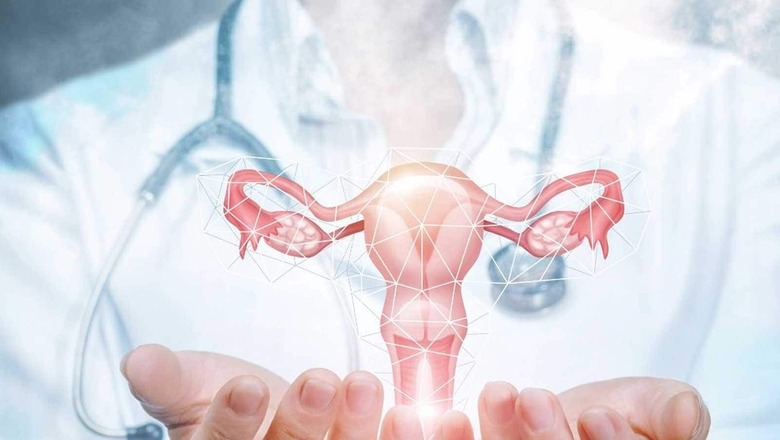
views
Female reproductive system consists of 4 parts – Vagina, Uterus, Fallopian tubes & the Ovaries. Fallopian tubes are tubular, hollowseromuscular structures that extend from the uterine horns to the ovaries in the female pelvis. They are 2 in number,one on the right and one on the left. The tube has 4 parts uterine, Uterine, Isthmus, Ampulla, and Infundibulum.The total length of these tubes are 11-12 cm with a lumen diameter of lessthan 1mm.
At the time of ovulation, the infundibulum or the fimbrial end of the tube covers the ovary and a negative pressure of – 1 mm Hg develops due to the movements of the cilia (hair-like structures on the wall) which sucks the ovum from the follicle into the lumen of the tube and waits for the sperm to reach the tube for fertilization. Once fertilisation occurs in the fallopian tube after 4 -5 days , the embryo is moved to settle in the uterus by the coordinated peristalsis like movement of the tube . Tubes thus play a very important part in the fertility of women. A patent tube alone is not sufficient, but overall tubo-ovarian relation should be healthy.
As ovulation can occur in either of the ovaries, both side tubes have work to do. While majority of women have a healthy pair of Fallopian tubes, there are some women who have only one functioning tube.
What causes the loss of functioning of the fallopian tube?
The most common causes of malfunctioning or non-functioning Fallopian tubes include:
- Prior infection (s) or medical conditions that has rendered the tube scarred, damaged, or removed
- Ectopic pregnancy (tubal pregnancy) that has resulted in permanent tube damage or removal of the affected side tube itself
- Anatomical developmental abnormality (mostly by birth) that renders a tube non-functional.
- Scarring of the tube as the result of endometriosis, where the tube can be stuck to the ovaries / uterus
- Fibroids (benign tumours of the uterus)due to their location can block the fallopian tube or its entrance to the uterus
- Prior abdominal or pelvic surgery that has caused scarring or damage to the tube.
The structure or the functioning of the tubes cannot be diagnosed by ultrasound scan. Laparoscopy is the gold standard for the evaluation of the tubes. HSG(Hysterosalpingography), which is commonly done for tubal patency gives only partial information about the patency of the tube, and many a times sudden spasm due to the test itself can give a picture of absent tubal patency.
Can woman with only one fallopian tube get pregnant?
The answer is a definite YES and with a good chance,provided certain other factors are enabling.
- First and foremost is that the available tube is patent.
- Age is the second factor – has direct impact on the quality of the eggs. The woman’s ovaries contain thousands of immature oocysts or eggs, and the number of eggs the woman will develop in her lifetime is already determined when she is born or more precise when she is in the womb of her mother. When the girl matures and her ovulation starts, her eggs go through a phase of cell division called meiosis. During this division process, older eggs are more likely to develop DNA errors leading to genetically abnormal eggs. Poor egg quality combined with one fallopian tube reduce the chances of conception. So young women with one tube are at a higher chance to conceive than older women
- Third is the regularity of her menstrual cycles.Average menstrual cycle for most women is between 21 -35 days. Regular menstrual cycle helps to time the “fertile“period with more accuracy than women with highly irregular cycles , more so if they want to plan pregnancy naturally. In a woman with one tube and an irregular cycle, pregnancy can be delayed.
- Fourth factor is the endocrinal problems in woman like Diabetes, Polycystic ovarian syndrome (PCOS) which can affect the ovulation itself.
- Last, but not the least is the health of the partner and the sperm/semen quality.If a woman has only one tube and has any of the above-mentioned factors interfering with her getting pregnant, it is important that the couple consult an infertility specialist for helping them achieve their dream of becoming parents, with assisted techniques, if necessary.
If both tubes are blocked then assisted reproduction techniques are the only solution.
Read all the Latest Lifestyle News here

















Comments
0 comment